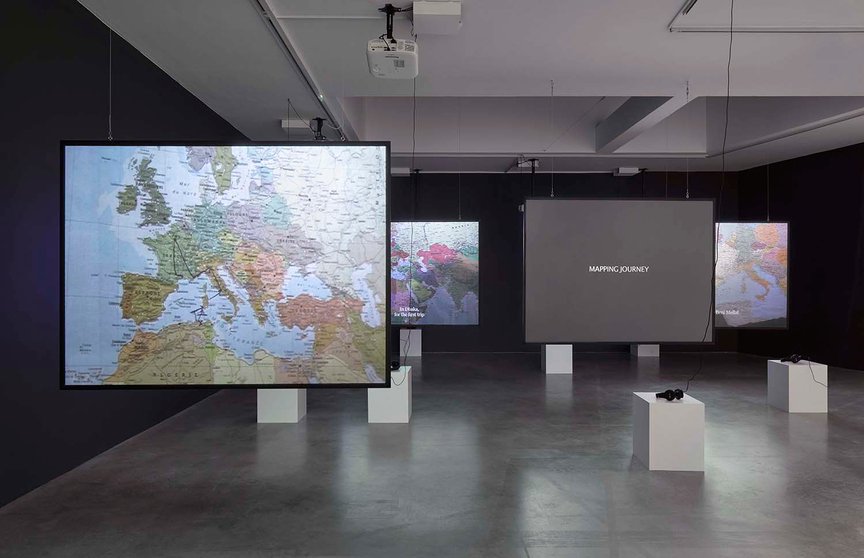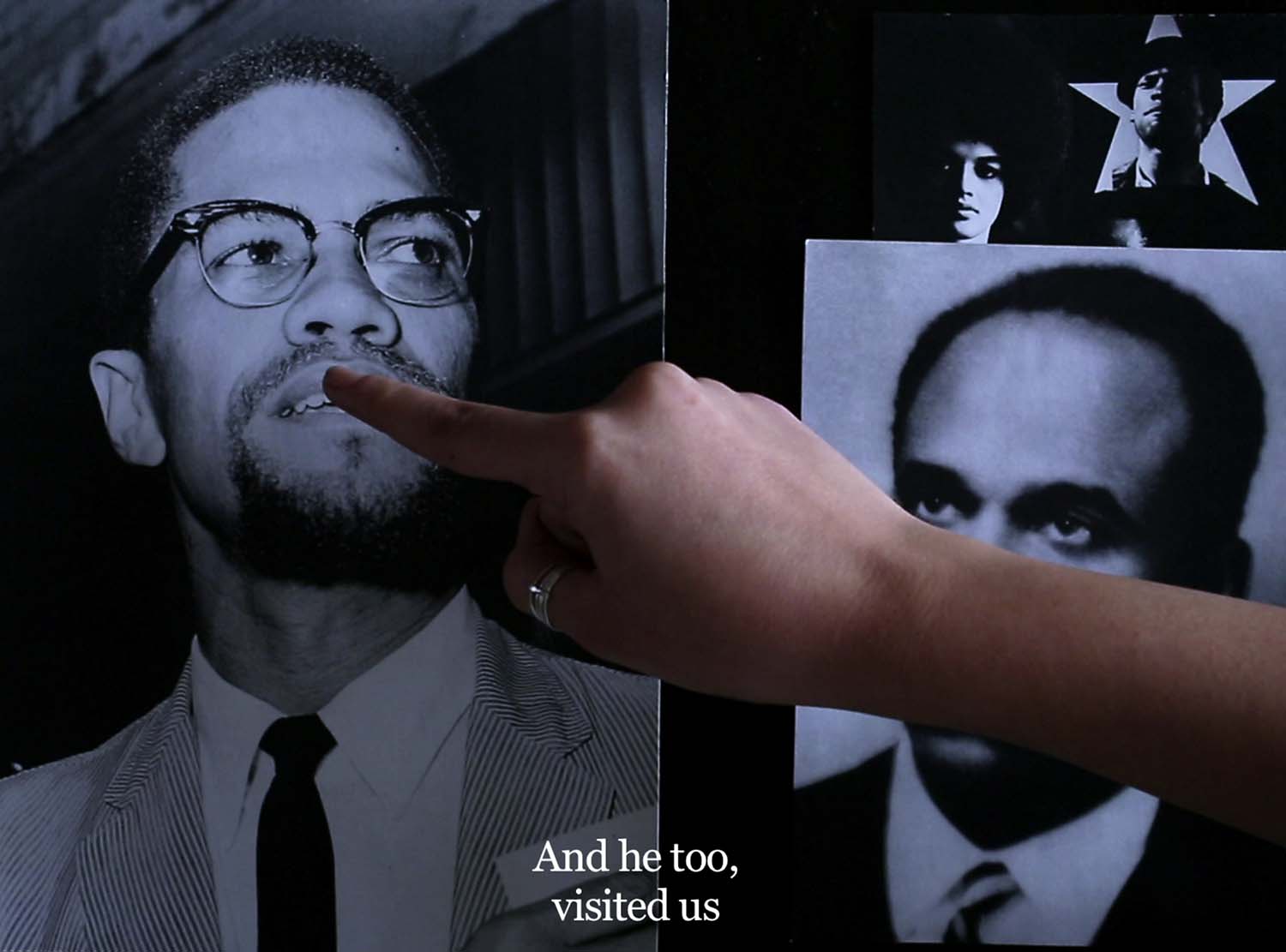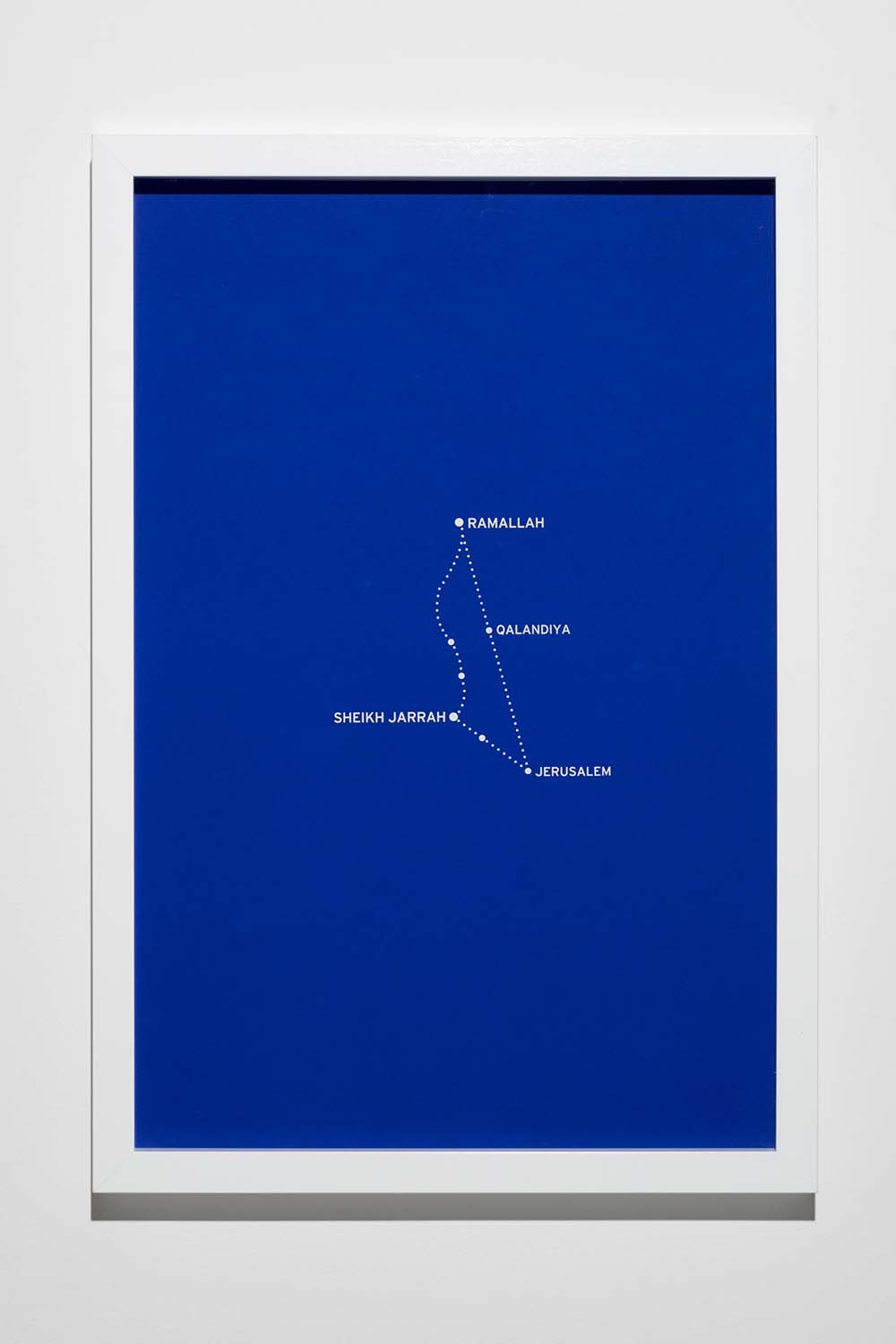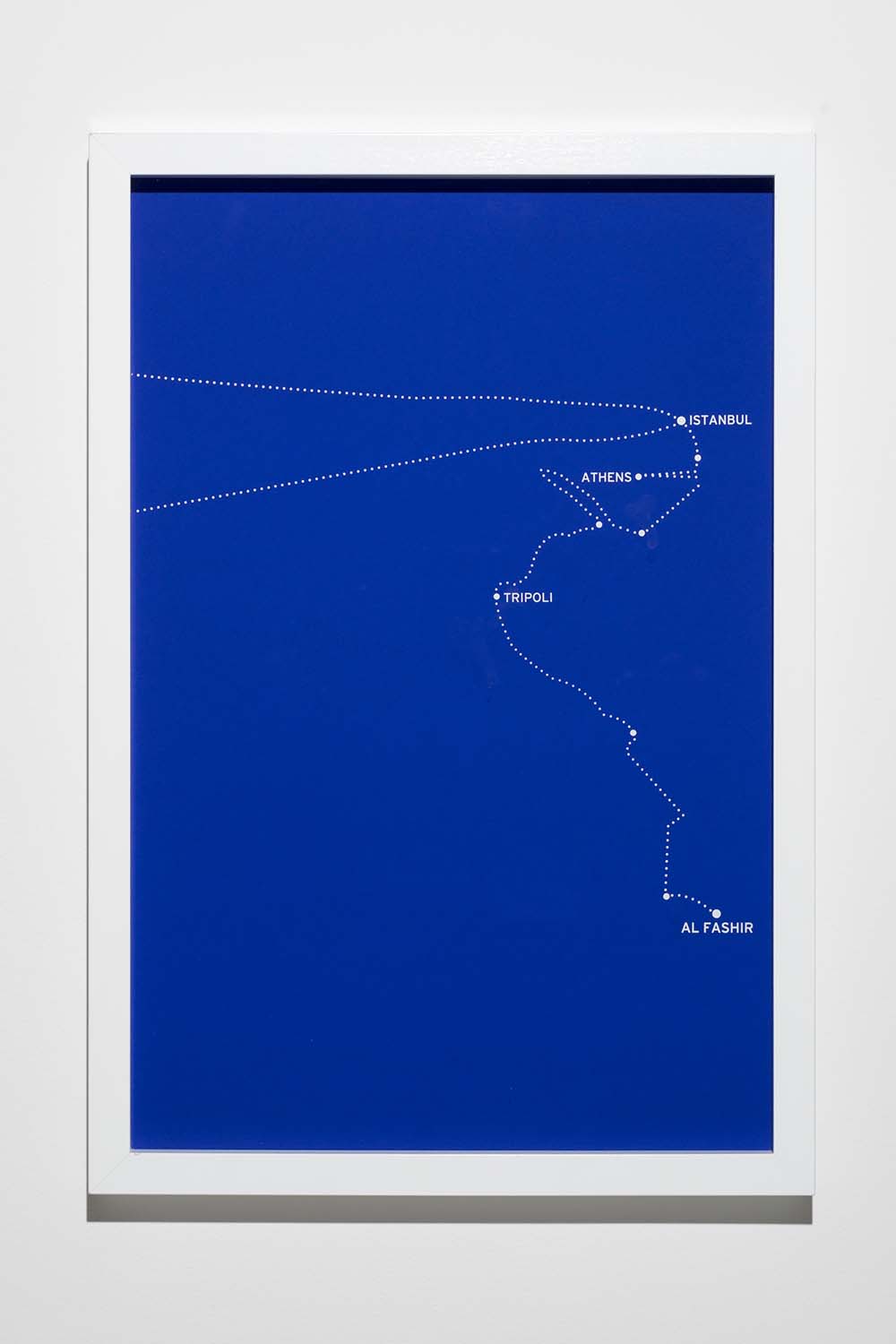Shows
Bouchra Khalili’s “The Mapping Journey Project”


Seven of the eight videos in Bouchra Khalili’s series “The Mapping Journey Project” (2008–11) each clock in at roughly four minutes, enough time to narrate illegal journeys that are transnational (Jalalabad to Rome, Tunis to Marseille) and domestic (Ramallah to Jerusalem). One entry, Mapping Journey #5 (2010), however, is more than twice as long as the others. It traces a Bangladeshi man’s five-year odyssey from Dhaka to Delhi, Moscow, Skopje, back to Dhaka, then to Dubai, with stops in Mali, Niger and Libya before reaching Lampedusa in Sicily. His path is riddled with administrative, security and financial hurdles on three continents. All of this is undertaken, the man notes, to support his family. His story represents the hundreds of thousands of narratives of labor migrants from Bangladesh who temporarily relocate to the Gulf States each year. Like the rest of the series, this video collapses time and space: the disembodied hands of our narrators outline trajectories on paper maps as they recount their own stories of migration. The durational nature of these works, combined with their narrative arc, offers an intimate treatment of a controversial topic, indicating that migration is, at its core, a story about individual people.
In her first solo exhibition in the United Kingdom at Lisson Gallery, the Moroccan-French artist Bouchra Khalili explores the representation of contemporary migration. Most recently displayed at New York’s Museum of Modern Art, “The Mapping Journey Project” demonstrates that squeezing the complexity of migration into neatly packaged anecdotes comes at the cost of schematic reduction, which “The Constellations Series” (2011) interprets in a minimalist fashion, drawing linear routes against a monochromatic blue background. Each of the eight terrestrial journeys described in “The Mapping Journey Project” is presented as a silkscreen print of a constellation chart. National borders and their attendant geographies disappear, leaving only a dotted line connecting stars that also represent stations in the expedition. Khalili mines her own practice to find alternative representations to maps and of our relations to borders and states, suggesting that these connections are, paradoxically, irreducibly complex. Abstraction eliminates the baggage of nationhood, geopolitics and history, but allows viewers to consider the arbitrariness of establishing these divisions.



Khalili further develops the conceit of time in her mixed-media installation Foreign Office (2015), where the evocation of a specific place and time—Algiers, 1962 to 1972—intimates the possibility of contemporary global solidarity. Comprised of a film, a silkscreen print and 15 photographs, Foreign Office situates Algiers as a “Mecca of revolutionaries” for organizations including the Black Panther Party, Nelson Mandela’s African National Congress, and the African Party for the Independence of Guinea and Cape Verde. The photographs depict emptied rooms of these organizations’ former headquarters; bereft of their political importance, they have become mausoleums of yesteryear’s organized resistance movements. The film shows two young Algerians sorting through a montage of images of revolutionaries, including the likes of Malcolm X and members of the Popular Front for the Liberation of the Occupied Arabian Gulf. Arranging and rearranging photographs of the outspoken individuals who shaped black history in the decade following 1962 allow these protagonists to interrogate the legacy of those revolutionaries in the present day. In Foreign Office, the history of Algiers as a nurturing ground for diverse self-determination movements provides inspiration for a contemporary resurgence in revolutionary spirit.


Khalili’s works position territory, history and revolution as fluid points on a register; these points move, shift and bump into one another to produce our understanding of global politics. Maps are only useful insofar as they mark distance, but even vast distances can be overcome by sheer determination. Cities bear the weight of history, but can also inspire those seeking a language to contain, mitigate and express their political strife. Whether informed by the movement of bodies through space or the static resilience of former halls of power, Khalili evokes the idea that, on the ground, contemporary society is defined by flux.
Bouchra Khalili’s exhibition is on view at Lisson Gallery, London, until March 18, 2017.







